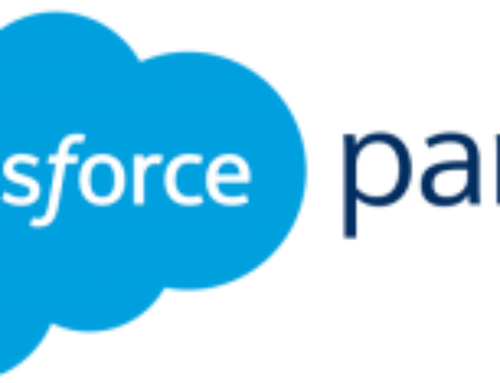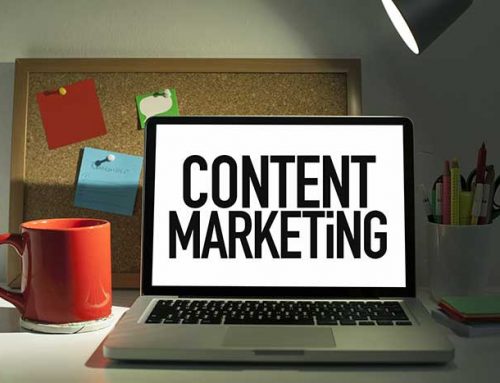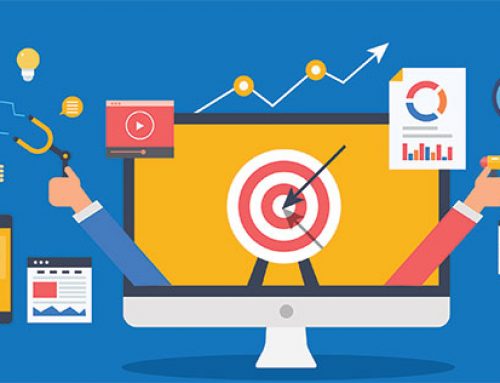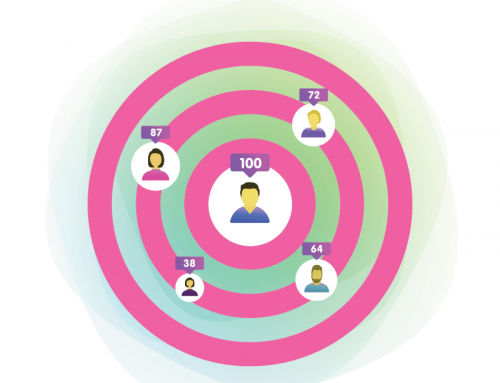Last week’s chapter, MA Series – Chapter 3: Central Intelligence and Data Governance, introduced you to the building blocks of the discovery process, the first steps your MARKETING AI® takes as it learns to walk, then run — then soar. Here, you’ll understand how that raw data comes together to form the architecture of your marketing plan by building highly detailed customer profiles and cloning. Customer portraits aren’t a new concept to marketers, but automation takes these images from two-dimensional snapshots to full-length feature films about your buyers. Once you have that film in place, you can use it to find and catalog other films in the same or similar genres, building a library of masterworks.
Who Are Your Customers?
Marketing today is about relevant, compelling, engaging content and inviting your prospects to learn more about you, none of which is possible if you don’t know as much as possible about your customers and why they became your customers. Before we get into how to create successful, high-yield campaigns consistently, we’ll show you how to identify who your customers and prospects are so you can define the content and pathways needed to guide them through your marketing pipeline.
To develop customer profiles, you and your marketing automation team leverage your current buyer retention data to develop a sound customer acquisition strategy. The positive effects on customer retention are readily apparent when you speak the language your buyers most want to hear. Because profiling and understanding your customer plays such a pivotal role in the cloning process, it also has a dramatic impact on customer acquisition. Following is a deeper look at those two concepts and how they work together.
Customer Acquisition and Retention
When you’re speaking to a new prospect, you’re talking to someone who has more to learn about you before making a buying decision. Figuring out how long it takes to make that decision is a complex process for you and your prospect, but your MAI is uniquely equipped to help determine that and to speed decision-making.
You know that about 50 percent of a buyer’s journey takes place before your prospect ever comes in contact with your sales staff — people do their research long before they buy. You still have something to prove to them; if you do it well, you have a winning customer acquisition strategy. Your prospects have done their homework on you and with effective profiling; you are also armed with knowledge. Cloning helps you understand a few vital details about your prospects before you make contact. You already have your existing customers’ DNA, so you can find prospects whose marketing footprint matches most closely with that of the people who already buy from you.
Customer retention must also be a high priority for any successful revenue-marketing plan. The DNA of your existing customer base extends far beyond demographics and behavioral scores. Developing a deep, thorough understanding of how your customers interact with you by assessing their specific interest in the products and services you offer closely correlates with sales now and into the future.
Firmographic information, such as job function, industry, and company size, can be very predictive of purchasing affinities. Contextual data, including groupings by product, topical interests, and web-page taxonomies, also can be used to determine cross- and upsell, and other retention strategies that are crucial to growing your business. This data can also help influence future customers’ behavior by using contextual information to match customer buying histories and content campaigns streamed to new, qualified leads. Customers who like what you offer are predisposed to be loyal, but as in any relationship, you need to put in some effort too. Your MAS helps you decipher what your customers want and how to give them more of it, which is the heart of customer retention. You can’t be relevant until you know your customers’ needs. Meet those needs and explain how you’ll continue to meet them, and you’ll turn loyal customers into referral sources and referral sources into advocates for your business.
The intersection of retention and acquisition is difficult for many marketers to navigate. Making the leap from data you already know to information you can use to grow is a significant challenge without automation to streamline the discovery process. The sooner you move outside your comfort zone and use predictive data, customer profiles, and cloning to enhance your acquisition prospecting, the greater your potential growth can be. It’s easy to rest on past successes and continue to reap profits from your current customers, but even the most loyal customer base suffers attrition.
It isn’t enough to meet that replacement rate; you need to exceed it to grow. With buyer personas and cloning, you’re able not only to top your customer replacement rate but also potentially double or triple it. This is a big change, and to handle it, you need MAS that can handle big data.
Big Data for Building Customer Profiles
What artists do with paint and editors do with film, marketing automation software does with information, using a collection of individual data points to put together a vivid picture of your customer base. With it, you can develop customer personas to inform your marketing decisions, understand the broader trends underlying your clients’ behavior and streamline the flow of prospects through your sales and marketing pipeline.
Sometimes it’s hard to spot evolving trends from the surface, but with MARKETING AI® you get a top-down perspective that lets you identify a shift as it begins. Marketing automation goes many steps beyond conventional marketing tools, not only analyzing data as a whole and creating composite customer personas but also highlighting changes in real-time. It adds a behavioral component to discovery, allowing you to see how your prospects interact with your brand and giving you an understanding of the environment that’s conducive to closing sales.
Marketing automation systems embed anonymous browser cookies and JavaScript to find out more about your leads: How did they find your page, how long did they stay on it, and what did they click while on your site? Understanding how people interact with your site, collecting anonymous data about their behavior, and building customer personas based on composite data, gives you a clear picture of how promising leads connect with you.
By making that connection between certain customer behaviors and sales readiness right away, placing them in an understandable, easily accessible context, your MAI shines a spotlight on your content and analyzes what works best, precisely what makes it such an effective conversion tool. Using that data to predict how future visitors will convert to customers tells you where your leads are and how best to reach them.
When you watch a movie, you aren’t seeing movement; you’re seeing individual still frames. Your brain is where the real magic happens, smoothing and connecting a series of static images into a dazzling action sequence, an exciting chase scene, or an impassioned kiss. Your marketing message becomes a finely produced movie when your potential customers see a seamlessly integrated marketing message that gives them the information, they need to make buying decisions precisely when they want it.
Big Data: The Four Vs
Modern marketers amass incredible amounts of data — more data than any single person or team of marketers could analyze to construct profiles — to construct customer profiles prior to cloning. Assembling a coherent customer profile from information spread across multiple platforms takes huge computing power, and it’s changing how modern marketing looks. To get a better understanding of the science behind buyer personas and to see how they relate to your marketing strategy, let’s look at how data scientists define big data.
Volume
It may sound redundant, but big data is really big. It’s so big, in fact, that people can’t readily imagine or manipulate it without an automated system to process the information. And big data isn’t a few thousand customer names, or even a few hundred thousand. Only when you move into the realm of millions and billions of data points do you start to see big data analysis truly shine. That doesn’t mean you need millions of customers to see big data applications in action; you just need a few customers whose collective behavioral, firmographic, demographic, and contextual information adds up to millions of interrelated data points.
Velocity
Not only must your system chew through mountains of data, but it also has to do it quickly. Data streams through the system at speeds far too fast to follow, giving your marketing program far greater flexibility. One of the biggest issues with conventional systems is their immobility. Customer personas can and do change over time, so a static system that doesn’t learn from and respond to its environment lacks the speed to change with your audience.
Variety
Data comes from many sources, and big data can assemble and analyze them all. That’s especially necessary for marketing as cross-channel data has historically been difficult to compare. How do you know if your blog resonates with each segment of your audience? How do you match website downloads with email opens and describe the relationship between these actions in terms of sales readiness? How do you create a customer profile that includes multiple layers of data, and how do you assign this profile to the correct audience segment? A marketing automation system will tell you how because it can handle the tremendous variety that’s the hallmark of modern digital marketing.
Veracity
We discussed it in a previous MA Series article, and we’re stressing it again here: Your data has to be clean to be accurate. When your data’s uncertain, your results are uncertain, too. Without certainty and consistency, companies aren’t able to generate predictive buyer models that tell them where their next customers may be found. A MAS maintains clean records across multiple channels, cross-referencing and appending vital information when possible to generate more accurate complete records.
B2B Profiles in Three Levels
The principles of MARKETING AI® work equally well for B2C and B2B applications, but B2B marketing involves additional layers of data that inform every step of your marketing process. If your customers are business professionals, there are identifiers critical to producing an effective profile that sheds light on your current clients, while helping you generate the information needed to acquire more like them. Business profiles break into three fundamental levels: site, individual, and contact.
On the contact level, you must have complete, clean data about each customer, so the goal is to collect or append all contact points. This is the most fundamental level of information about the people you’re reaching, including first names, last names, company names, postal addresses, phone numbers, and email addresses. These are the building blocks we talked about previously or the single frames that make up the epic film that is each buyer’s journey.
Everyone who works for a company also has another layer of information that describes that person’s role within it. On this individual level, you want to know your customers’ job titles, responsibilities, and purchasing authority. You’re speaking to the position, rather than to the person who is your contact, so this data set may remain consistent as personnel change within your target businesses. Your marketing message has a far greater impact when it reaches people in a position to act on it directly, so collecting and appending data at the individual level is vital. Think of this level as sets within that metaphorical movie, sets that different actors may move through but that remain consistent throughout the film.
At the site level, you want to know firmographic data about the company, including number of employees (are you speaking to small companies or Fortune 1,000 firms?), sales volume (as more technology firms emerge, sales volume can be a telling metric), standard industrial classification (SIC), which defines the type of business or industry your sales lead is in (a key piece of data that’s the foundation of sales strategy and personalization to your prospects and customers), and site penetration. Site penetration is a vital statistic that tells you how many contacts you have at a company, which of them are potential customers, and whether you can benefit from expanding your reach within it.
Note that demographic and firmographic information at every level appears relatively static compared with the constant shifts in behavioral data, which applies to all three levels. If trying to visualize many levels of granularity for three separate types of data, all of which change at different speeds, is making you feel a little like you’re trying to watch three movies at once, you’re starting to see why a marketing AI is essential to 21st-century marketing. Automation coordinates pieces of information that are difficult to visualize effortlessly and unites them into a cohesive whole.
Building a Total Customer Profile for Cloning
If you could condense your entire customer base to 10 representative customers, you would undoubtedly spot some interesting similarities and trends that are difficult to see when looking at thousands or millions of real individuals. You might notice that four or five of your representative customers have a large overlap in interests while others might not have as much in common. A MARKETING AI® can see that big picture comprising millions and translate it into a handful of customer personas via profiling. Profiling for marketers means creating an accurate portrait of your customers so you know how to be relevant to other prospects that have a lot in common with them. With profiling, you’re able to recognize those areas of common ground; with cloning, you find others who share the same territory.
Let’s look at your 10 representative customers again. You could learn a lot about them if you could hear their conversations and know more about how they relate to one another. That’s the kind of insight a MAS delivers. If you were to invite another two or three customers to your party, would you know where to send the invitations and who might be most interested in receiving them? Your marketing AI can give you some idea, but otherwise, it’s hard to guess where your next great market might be.
Before you answer, think about what you want to accomplish by inviting more guests. Every business can say it wants to expand its customer base and increase profits, but it isn’t enough to know generalities. Specificity leads to relevance, and relevance leads directly to better customer retention and acquisition.
Once you’ve defined those 10 people at your party, you can clone them to attract new customers. A cloned prospect contains characteristics that are similar to those your customers already have. This is one of the more challenging aspects of marketing, but it’s also richly rewarding. Helping a business thrive by expanding its reach instead of staying within its safe zone is gratifying for marketers, but the real benefits go to the businesses themselves. It’s as important to maximize the revenue you are generating from your existing retention customers as it is to generate dollar one from a prospect that becomes a new customer or acquisition, and a sound profiling process achieves both.
Finding and Cloning Your Best Customers
All 10 customers at your gathering are important, but some are truly the life of the party. Some of them bring guests — that is, new prospects — in the form of referrals and highly visible brand loyalty. Others are big spenders and bring lavish gifts for the host. By locating those party guests and inviting more just like them, you reap tremendous benefits. It’s the 80/20 rule in action again: 20 percent of your customers probably account for 80 percent of your business. Think of them as that fascinating couple you always want to invite to your next gala event.
As with all profiles, the first step to finding ideal customer profiles (ICPs) and cloning their DNA is working with the cleanest data possible. Without a clean database, you’re relying on potentially inaccurate information that could throw off your results by orders of magnitude, especially since your sample set is now smaller than profiling your entire customer base. Merging and purging data, segmenting by recency, and enhancing data with append services maximize your accuracy when filling in the blanks on your ideal customer base.
Useful customer profiles depend on what you want those customers to do, and that’s why your MARKETING AI® analyzes your results, creates audience segments, and frames certain defining characteristics as key performance indicators for those segments. Depending on your campaign and where you’d most like to grow, you might look at the people who have the highest overall sales, the highest per-sale volume, or the greatest purchase frequency. If your industry is highly seasonal, for example, you could realize the greatest gains from looking at frequent buyers and cloning them to court others who will supply you with a more stable off-season income. Other common customer KPIs include:
- Customer loyalty – Who has been with you longest, and why are they the standard-bearers for loyalty? This metric is especially valuable for businesses with a high churn rate in their customer base.
- Recency – Have you experienced a boom in one market segment within the past quarter or two? Such growth spikes are rich opportunities for spotting a nascent market niche and filling it before competitors even know it’s there.
- Engagement – You know some people in your intended audience are paying closer attention. They are regularly opening your emails, downloading your content, and attending your webinars. Finding them and looking for more like them will increase your open and click rates, which in turn leads to a wider and more responsive customer base. Keep this metric in mind when you’re ready to expand initial contact lists.
- Gold-star customers – These are the customers who reach for the gourmet coffee, spring for first-class plane tickets and invest in your premium services. Look to these highly involved customers who are willing to spend a little extra to get upgraded products and services to see how you can attract more of them with cloned profiles.
- Referral magnets – Some customers may not be your most lavish spenders or your longest-lived loyalists, but they have great connections and deserve to be valued highly too. Referrers are advocates for your business and are an excellent way of generating high-quality leads, so create a profile of your frequent referrers to find more of them and encourage others to follow in their footsteps.
Cloning in the Wild
We’ll say it again: You can’t be relevant if you don’t know who your customer is. Marketing to third-party lists and online communities using top 20 percent cloned customer profiles instantly gives you some knowledge of your audience so you aren’t starting cold.
With clean, complete data that has been thoroughly evaluated and prioritized, you’re ready to take your buyer personas and clone them outside your current customer base. Databases containing tens of millions of members work with cloned profiles to generate lists of customers who closely match those characteristics and typically behave in the same manner as their associates in the same marketing segment. Businesses in every sector have seen their customer base become more informed and proactive, but in B2B industries, the evolution from passive prospect to active information hunter has transformed the marketplace. With Google, review sites, and company blogs, discovering more about a product and the company that offers it is as quick as typing in a search string. Your business content has a lot to do with capturing the prospects that visit your website. But many otherwise promising leads bounce away before they get to know all the facts you
want them to learn about you. By building customer personas based on composite data, you get a clear picture of how promising leads connect with you.
No amount of guesswork can compare to a thorough discovery process through data hygiene, enhancement, and evaluation into usable ICPs and cloned prospects. Once you have those profiles in hand, you’re ready to bring creative into the mix and execute your marketing strategy.
What Do You Say to Your Leads and When Do You Say It?
Businesses in every sector have seen their customer base become more informed and proactive, but in B2B industries, the evolution from passive prospect to active information hunter has transformed the marketplace. With Google, review sites, and company blogs, discovering more about a product and the company that offers it is as quick as typing in a search string. Your business content has a lot to do with capturing the prospects that visit your website. But how do you prevent otherwise promising leads from bouncing away before they get to know all the facts you want them to learn about you? You constructed that picture during the discovery phase of the marketing cycle, and now it’s time to put that knowledge to use. The next phase takes you from theory to execution and lets your customers know more about you.
In the next part of the series, we explore everything from the basics of outstanding email to the finer points of aiming at the moving SEO target. You’ll understand more about how lead scoring contextualizes the data your MARKETING AI® gathered in the discovery phase and learn about best practices for major content streams; discover why personalization matters; and gain insight into using social media as a launchpad to help your marketing strategy soar. Perhaps most important, you’ll find out how and when to deliver content that speaks to your audience to elicits a positive response.
Next Week: MA Series – Chapter 5: Lead Scoring
A MARKETING AI® Mindmap
In this series Marketing AI®: From Automation to Revenue Performance Marketing, you’ll learn much more about what marketing automation is, what it isn’t, and where it fits into a marketing strategy. You’ll also discover more about traditional marketing through the lens of automation and read a compelling case study about how one company went from finding itself in a marketing dead zone to flourishing as an automated, intelligent, and responsive organization that converted its old marketing plan into a revenue marketing strategy.
Sign Up To Receive Future Enewsletters
Copyright 2021 Reach Marketing LLC
MARKETING AI® is a registered trademark of Reach Marketing, LLC











